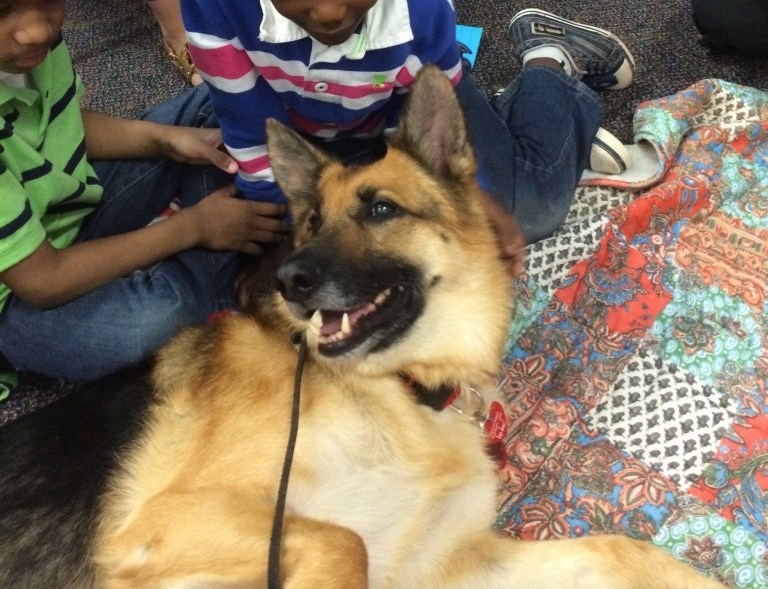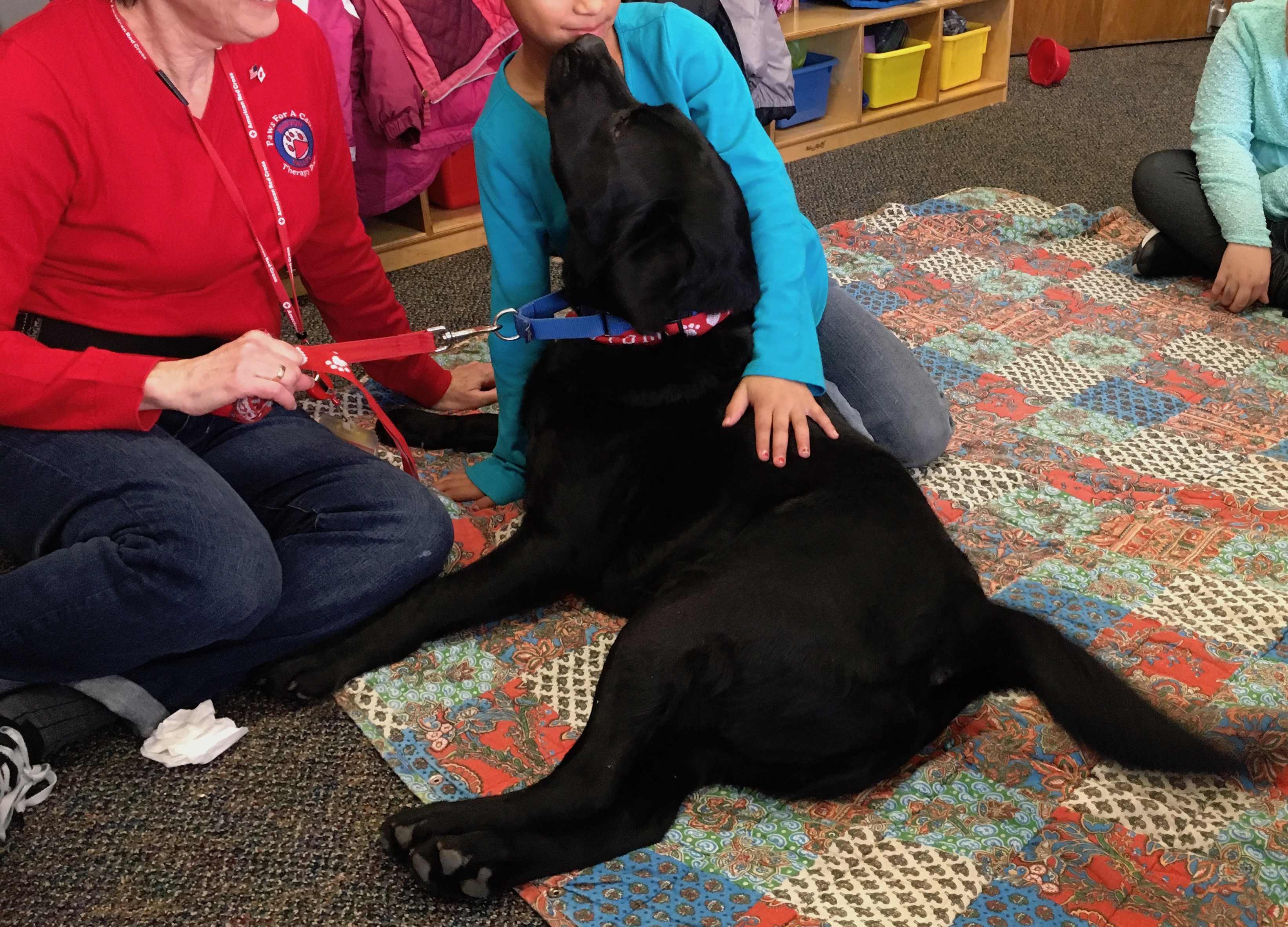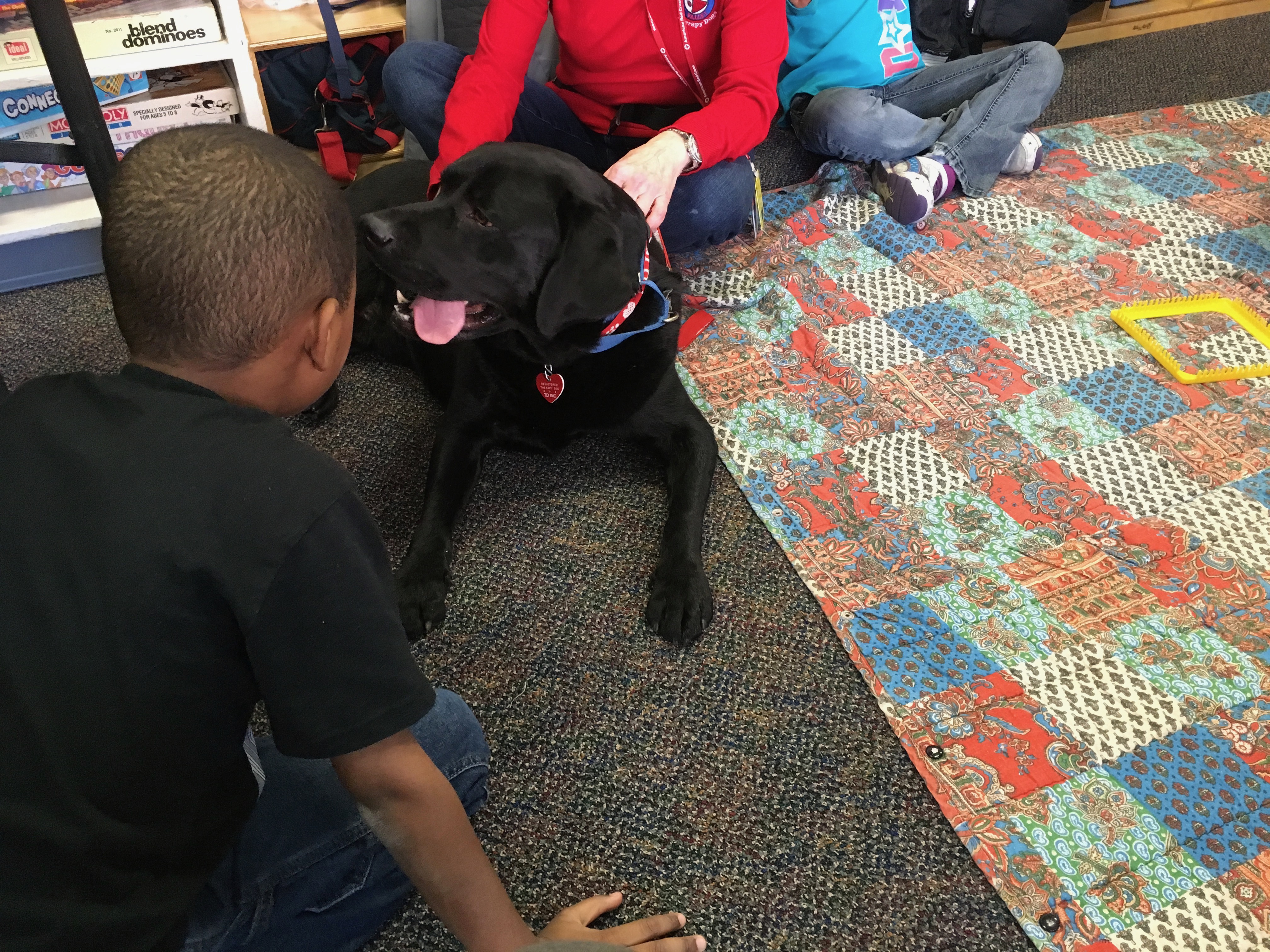Pat Coglianese and her German Shepherd Dog, Jessie, and Susan Henson and her dog, Douglas, a Labrador Retriever, have been active therapy dog teams visiting for Hudson Valley Paws for a Cause.
St. Dominic’s is a school for special needs children located in Blauvelt, NY. Jessie and Pat and Susan and Douglas have alternated visiting weekly in Miss Rose’s class of children whose ages range from 6 to 9 years. The dogs are the highlight of the week for the children and Rose, a very talented teacher, has created a curriculum around the teams’ visits, focusing on various topics and social situations.
Each session starts in a circle with each child greeting the team (Pat and Jessie or Susan and Douglas). When each child greets the team, s/he gets to pet the dog. The social focus continues with an activity such as a role play or applying active listening. As each child completes his or her portion of the activity s/he gets to pet the dog as a reward. Once everyone has had their turn, each child gets to choose what s/he would like the dog to do. It can be a special trick, or even getting the dog to find a treat that the child hides anywhere in the room. The children then each get to make some closing remarks, saying goodbye to the team, giving the dog a final pet and returning to their seats.
 Each session lasts about an hour. Some of the topics covered have been:
Each session lasts about an hour. Some of the topics covered have been:
- Greetings – Meeting someone, saying hello, goodbye greetings for special occasions.
- Feelings – What do you say when people feel bad, you hurt them or need to make them feel better.
- Listening – Picking up patterns, actively listening to others, repeating what others have described.
- Watching – Mimicking actions of others, watching what the dog is doing and describing it.
- Following Directions – Listening and doing what was described by another student. Describing to another student what needs to be done.
- Tactile – Closing eyes and feeling what letter student has written on their back, identifying an object from how it feels.
- Emotions – Reading body language. How do you know if dogs are happy, sad, or angry? How do you know if people are happy, sad, or angry.

The teams are greeted warmly when they visit. Their visits are not only within Rose’s classroom, but students and faculty stop to pet the dog on the way into the school and on the way out.
This has been a wonderful experience for these teams and the children have certainly benefitted from their visits. It would be wonderful if all therapy teams had an opportunity to be such an integral part of the learning process and encourage children’s learning in the classroom.


As is noted, this is such a special venue. Not only do the children look forward to the visit but Susan and Douglas do also. I bet Jessie and Pat do too!!!